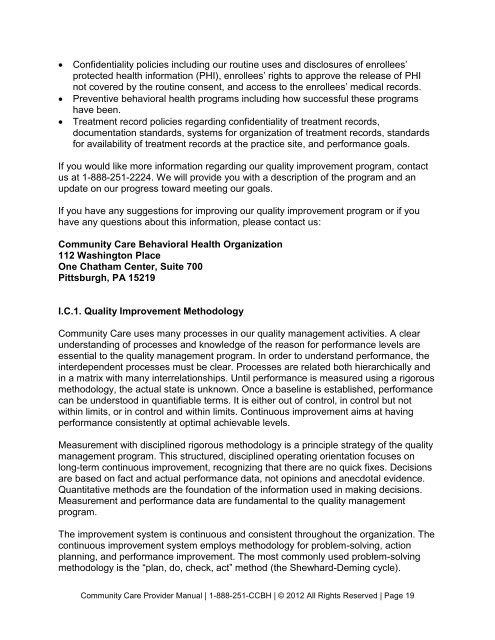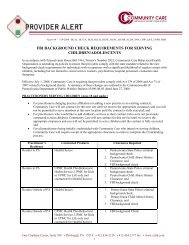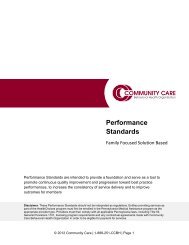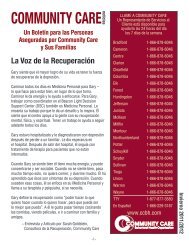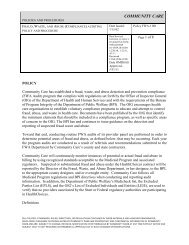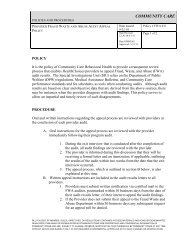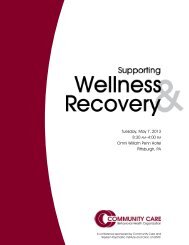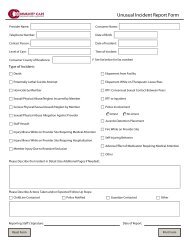Billing Manual for Community Care Network Providers
Billing Manual for Community Care Network Providers
Billing Manual for Community Care Network Providers
Create successful ePaper yourself
Turn your PDF publications into a flip-book with our unique Google optimized e-Paper software.
Confidentiality policies including our routine uses and disclosures of enrollees’protected health in<strong>for</strong>mation (PHI), enrollees’ rights to approve the release of PHInot covered by the routine consent, and access to the enrollees’ medical records.Preventive behavioral health programs including how successful these programshave been.Treatment record policies regarding confidentiality of treatment records,documentation standards, systems <strong>for</strong> organization of treatment records, standards<strong>for</strong> availability of treatment records at the practice site, and per<strong>for</strong>mance goals.If you would like more in<strong>for</strong>mation regarding our quality improvement program, contactus at 1-888-251-2224. We will provide you with a description of the program and anupdate on our progress toward meeting our goals.If you have any suggestions <strong>for</strong> improving our quality improvement program or if youhave any questions about this in<strong>for</strong>mation, please contact us:<strong>Community</strong> <strong>Care</strong> Behavioral Health Organization112 Washington PlaceOne Chatham Center, Suite 700Pittsburgh, PA 15219I.C.1. Quality Improvement Methodology<strong>Community</strong> <strong>Care</strong> uses many processes in our quality management activities. A clearunderstanding of processes and knowledge of the reason <strong>for</strong> per<strong>for</strong>mance levels areessential to the quality management program. In order to understand per<strong>for</strong>mance, theinterdependent processes must be clear. Processes are related both hierarchically andin a matrix with many interrelationships. Until per<strong>for</strong>mance is measured using a rigorousmethodology, the actual state is unknown. Once a baseline is established, per<strong>for</strong>mancecan be understood in quantifiable terms. It is either out of control, in control but notwithin limits, or in control and within limits. Continuous improvement aims at havingper<strong>for</strong>mance consistently at optimal achievable levels.Measurement with disciplined rigorous methodology is a principle strategy of the qualitymanagement program. This structured, disciplined operating orientation focuses onlong-term continuous improvement, recognizing that there are no quick fixes. Decisionsare based on fact and actual per<strong>for</strong>mance data, not opinions and anecdotal evidence.Quantitative methods are the foundation of the in<strong>for</strong>mation used in making decisions.Measurement and per<strong>for</strong>mance data are fundamental to the quality managementprogram.The improvement system is continuous and consistent throughout the organization. Thecontinuous improvement system employs methodology <strong>for</strong> problem-solving, actionplanning, and per<strong>for</strong>mance improvement. The most commonly used problem-solvingmethodology is the “plan, do, check, act” method (the Shewhard-Deming cycle).<strong>Community</strong> <strong>Care</strong> Provider <strong>Manual</strong> | 1-888-251-CCBH | © 2012 All Rights Reserved | Page 19


